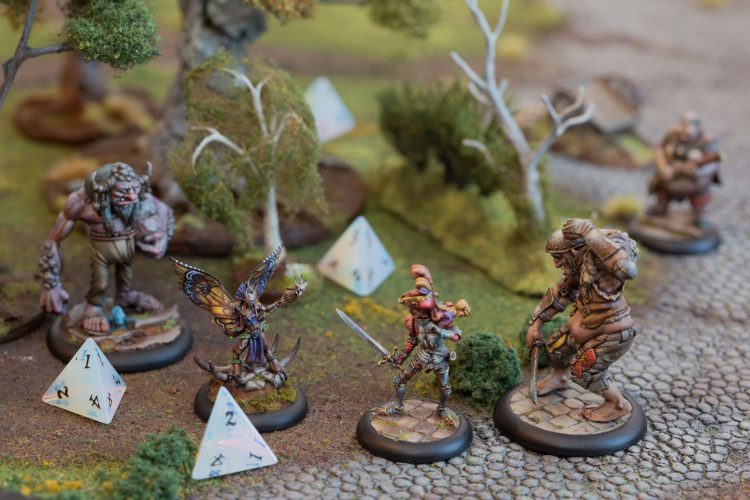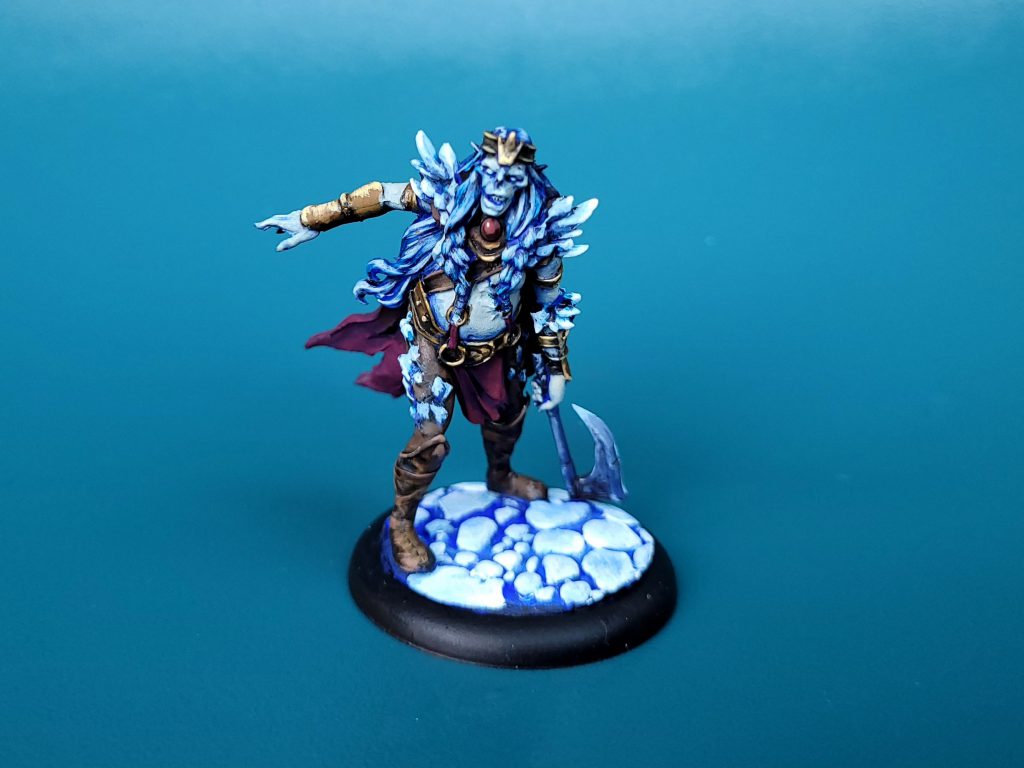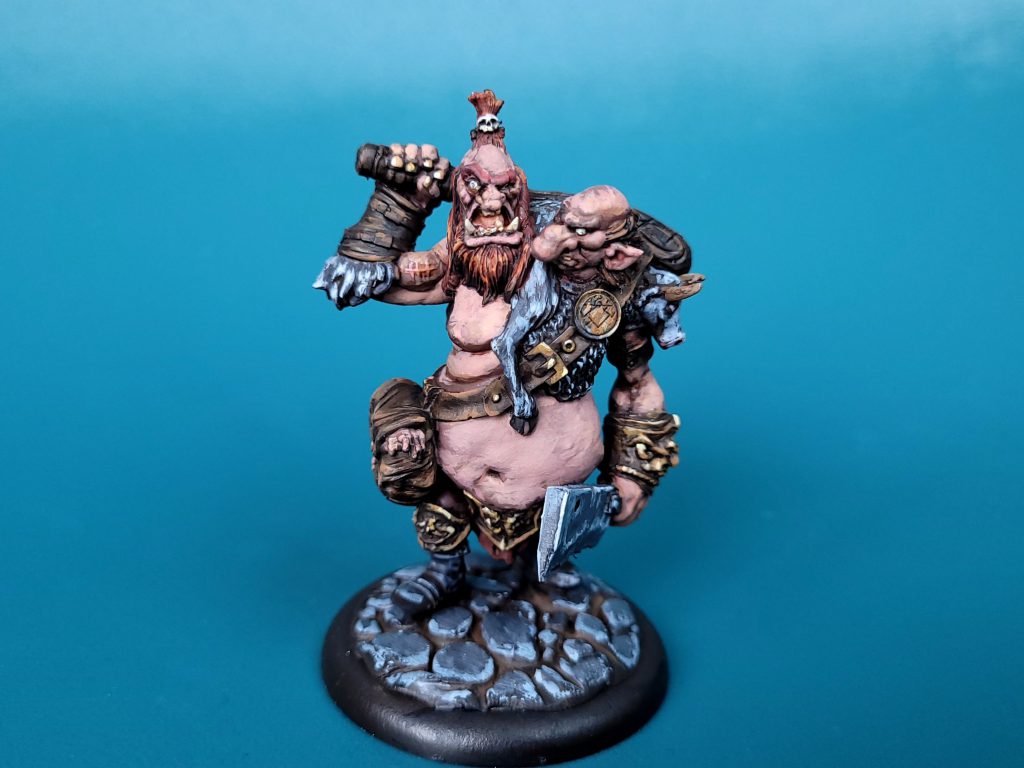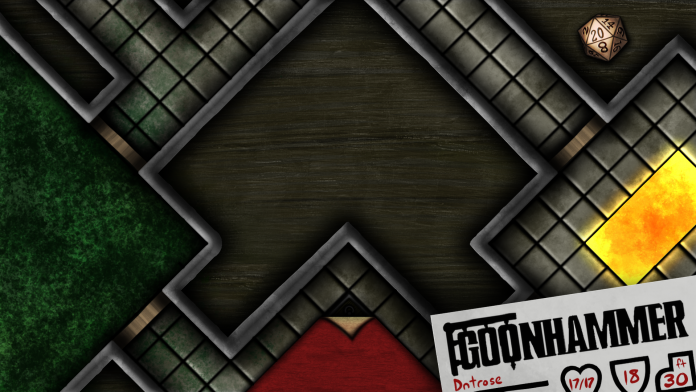Moonstone is a game we reviewed before back in 2020. Four years on they have released an additional campaign book, two new factions and now a new starter set. Let’s take a look at what’s new, what has changed, and whether or not you should be playing Moonstone in 2024.
For full disclosure, Goblin King Games, the publisher, sent me a review copy of the new starter set as well as a box of the new Psychopomps, but the opinions in the article are entirely my own.

What is Moonstone?
Moonstone is a fantasy skirmish game set in the world of Tauber.
You play on a 3ft x 3ft board with each player fielding a troupe of between four and six characters depending on the game mode / number of players. The characters cover a wide range of fantasy races such as Faeries, Fauns, Goblins, Gnomes, Giants, Trolls and Humans. With an aesthetic leaning heavily towards more of a whimsical fantasy setting than a grimdark one.
The ultimate goal of the game is to harvest more moonstones than your opponent over the course of 4 rounds. But what is a Moonstone you ask? Well in the lore Moonstones grow from the ground overnight, they need to be dug out quickly because once the sun hits them they crumble to dust. There are mysterious Wizards at the Tower of Grommel who will pay good money for an intact moonstone so various factions will go to extreme lengths to grab them.
We will go into more about the gameplay below but first let’s take a look at what’s in this latest starter set.
Contents of the Starter Set
There are 4 main factions within Moonstone. The original starter set gives you models from two of those factions, the Commonwealth and the Dominion. This starter set instead, gives you models from the Shades and Leshavult factions. The Shades are the latest faction to come to moonstone having been released in their most recent Kickstarter. They are an undead faction often affectionately referred to as ‘fundead’ due to the whimsical nature of the game. The Leshavult were also originally part of a Kickstarter campaign and are mostly represented by cultists living in the woods.

Models
Model wise the box comes with the contents of 4 boxes you could otherwise buy separately.
- The Never Ending Knights – three of the latest undead Shades faction
- Angerboda – an unyielding Frost Giant
- The Hunting Horns – three fauns of the Leshavult
- The Jackalope – an enormous bunny rabbit with antlers
Giving a total of eight miniatures.
It’s worth noting value-wise that the cost of this starter box is far less than buying each of the above boxes separately giving some good value here.
All these models are resin and come with slotted bases. If you are newer to miniature modelling, resin models can be slightly more of a challenge than plastic. You usually need to wash resin to ensure paint will adhere and there is often more cleanup of mold lines compared to the equivalent in plastic. Additionally, as resin can be quite brittle the models can be fragile. In the case of these models specifically, the mold lines were relatively minor and they fit together well. I didn’t need to re-shape any of the miniatures with heat which is something I’ve had to do with resin from Forge World miniatures in the past. It is worth noting that some of the older resin sculpts from Goblin King Games did have some of the usual resin complaints but within this latest box it appears to be a higher quality resin used.
Slotted bases may not appeal to all hobbyists. On the plus side if you are here just for the gameplay the models can go together quickly and slotted bases can help with that. Personally, I would rather flat bases as once you glue your miniatures down you are left with the gap for the rest of the ‘slot’ that needs to be filled with modelling putty or similar.
The sculpts of the models themselves are beautiful. One of the main appeals to this game over others is the amount of character they have managed to cram into each sculpt and each model oozes personality. Jayda is leaping back while firing her bow giving a great sense of movement. Angerboda the frost giant is dragging her axe on the ground in a twisted undead shamble. Mr Toodles the Fawn is playing a “Goblin jazz funk solo” on his flute while doing a little jig. Yes, this is the real name of the ability showing once again the whimsical nature of this game.
Fans of painting will be right at home with these sculpts. Recent Games Workshop models are crammed with so much detail and so many bits and bobs that the painting process can end up more meticulous than enjoyable. These sculpts include just enough detail that give the personality of each character without being cluttered.
Accessories
Besides the miniatures the box comes with:
- A cardboard token sheet that includes a measuring widget and blue energy tokens
- A rulebook printed on a thick high-quality paper
- A d6 and 7 D4 dice.
- A card deck including both the Arcane deck for casting spells / abilities and a deck for melee combat
- Stat cards for the miniatures in the box
- Tokens for the psychopomps that the shades can summon
Overall these are all the basics you would need to start playing straight from the box. Though you would need to source your own 3ft x 3ft board and fantasy terrain.
It is worth noting that all the rules and character cards are freely available to download online but the addition of a physical rulebook on a high-quality paper stock is very welcome.
One minor complaint would be that the game is designed so that to track damage and power on characters you sleeve the cards and use a wipeable marker on the character cards themselves. As that is a core part of the game it would have been nice to include a marker and sleeves to this set. Another minor complaint is that there are multiple conditions that can be passed around in the game. These can become hard to track without tokens or some equivalent. The tokens provided are just blue circles to represent energy but it would have been nice if there were more provided representing things like ‘slow’. The Goblin King Games site does sell fancy acrylic sheets that tracks other conditions but out of the box you would need to track everything with pen and paper.

Gameplay
So how does the game play and what is different about Moonstone than other fantasy skirmish games?
In game, the moonstones that grow from the ground are represented by D4 dice. At the start of the game a handful of these dice are dropped in the center of the table giving a random spread to where the action will be. The number on each D4 represents how deep the Moonstones are and therefore, how difficult it is to dig them up. The randomness of where these dice will land means that no two games ever end up quite the same. Sometimes the Moonstones will end up clustered in the middle encouraging a central fight. Others times they will be spread out making it more likely to need to scramble around the board picking up stones before your opponent can.
The game uses alternating activations and there are reactions you can do in your opponent’s turn so you always need to be on the ball to make sure you can respond to what your opponent is doing.
These aspects or similar can be found in other similar games but what makes Moonstone really shine is the combat system. There are 2 decks of cards shared by all players the arcane deck for arcane abilities and the combat deck for melee.
Arcane Abilities
The Arcane deck is used for casting spells, or using special abilities or equipment. Both players know the contents of the deck going in.
When using an arcane ability such as a healing spell from Mr. Toodles, his controlling player will draw cards and the opposing player will also draw a hand to resist. The beauty of using cards rather than dice for the random element is that you can bluff the result. To heal, Mr. Toodles needs blue cards so he could put a card face down and SAY he has a blue 2. There are only 2 blue 2s in the deck, if the resisting player has one of them he might call a bluff. If you inaccurately call a bluff the initial player gets to put another card down for free without paying additional power. But if you accurately call a bluff you can put a card from your resisting card down that they have to play instead. The arcade deck includes ‘catastrophes’ like jokers and each ability has a bad catastrophe effect. In this case, if the resisting player called the bluff and Mr. Toodles was indeed lying, the catastrophe would be that instead of healing, he takes damage himself!
With this system it doesn’t matter if (like me) you feel like you are an incredibly unlucky person who never gets the dice result they need. You can just lie your way out of it!
Melee Combat
The melee deck is also shared between players but works slightly differently. There are 6 types of melee card within the deck that work akin to an advanced game of rock, paper, scissors. A ‘falling swing’ card is good into a ‘low guard’ but terrible if the opponent has played a ‘high guard’. Characters who are particularly strong in melee get to draw more cards than their opponent and both players will secretly reveal their cards at the same time. Once again with a shared deck this brings some skill into it because if you are the attacker and have all the high guards you can safely play a falling swing knowing you can’t be punished.
There are even more layers to melee combat as each attacking melee card has different damage types and different characters excel based on those. For example, Hoff the Faun soldier has a felling axe which means he deals additional damage with impact attacks and deals no damage with piercing attacks. The ‘Thrust’ attack can only be piercing so when defending against Hoff you can be fairly confident that he won’t play a thrust and therefore a ‘sweeping cut’ (which is the usual counter to a Thrust) might not be as effective.
Then as an even further layer to melee combat each character has a ‘signature move’ that they can play replacing one of the listed cards. Hoff’s signature move replaces a falling swing and is called Headbutt. This is similar to a falling swing but allows him to move the enemy away after the attack. Each character’s signature move usually has an additional effect that makes it better than the melee card it’s replacing. Some examples would be moving away from combat, dealing AOE damage or preventing an opponent from healing.

Expanding the Starter Set
Though they have marketed the box as Shades vs Leshavult you actually get more models from the Commonwealth than any other in this box as all the Leshavult present and Angerboda are dual Commonwealth affiliated. This means that if you wanted to continue your collection with the Commonwealth or Leshavult factions you can.
Although there are technically 4 aforementioned factions, there are sub-factions within each and a keyword system encourages you to mix and match between them. For example, as well as being a Shade for the Risen, Angerboda is a Norse giant for the Commonwealth. This means she can be right at home with the risen Shade Negroli where his ‘A bone to pick with you’ ability can benefit her melee attacks. Or in the Commonwealth with the giantess Brunhilde whose ‘Epic ballads of Giant Heroes!’ ability can provide her with additional energy. With all the character cards being freely available online, pouring through them to find all the little interactions to build your perfect troupe can be a game in itself.
There are over 100 characters in the game at this point spanning multiple play styles and races. One beauty of the game is that none of the rules or character cards are locked behind having to buy the latest book and everything is freely downloadable on their website. Additionally they have provided paper stand in models so technically if you want to play the game right now all you need is a printer!
Final Thoughts
What should become apparent is that this game is easy to learn and hard to master. I have played it with friends as a ‘beer and pretzels’ game a few times and it will come easily to anyone with a little experience with tabletop gaming. There is enough depth here however that if you want a very tactical and nuanced game all the makings of one are here. It becomes easier to bluff once you and your opponent have a better understanding of what each character can do.
You can find all the nuanced interactions between characters to find the perfect strategy to defeat your opponent or you can have just as much fun making a Goblin knight on a pug charge into the middle of enemies to do an aoe fart at them…
And for those of you who don’t like reading a big essay some bullet points:
Pros
- Easy to learn; hard to master.
- Beautiful miniatures full of character.
- A fleshed out whimsical fantasy world.
Cons
- Resin can be difficult to work with.
- Slotted bases aren’t for everyone.
Have any questions or feedback? Drop us a note in the comments below or email us at contact@goonhammer.com. Want articles like this linked in your inbox every Monday morning? Sign up for our newsletter. And don’t forget that you can support us on Patreon for backer rewards like early video content, Administratum access, an ad-free experience on our website and more.


